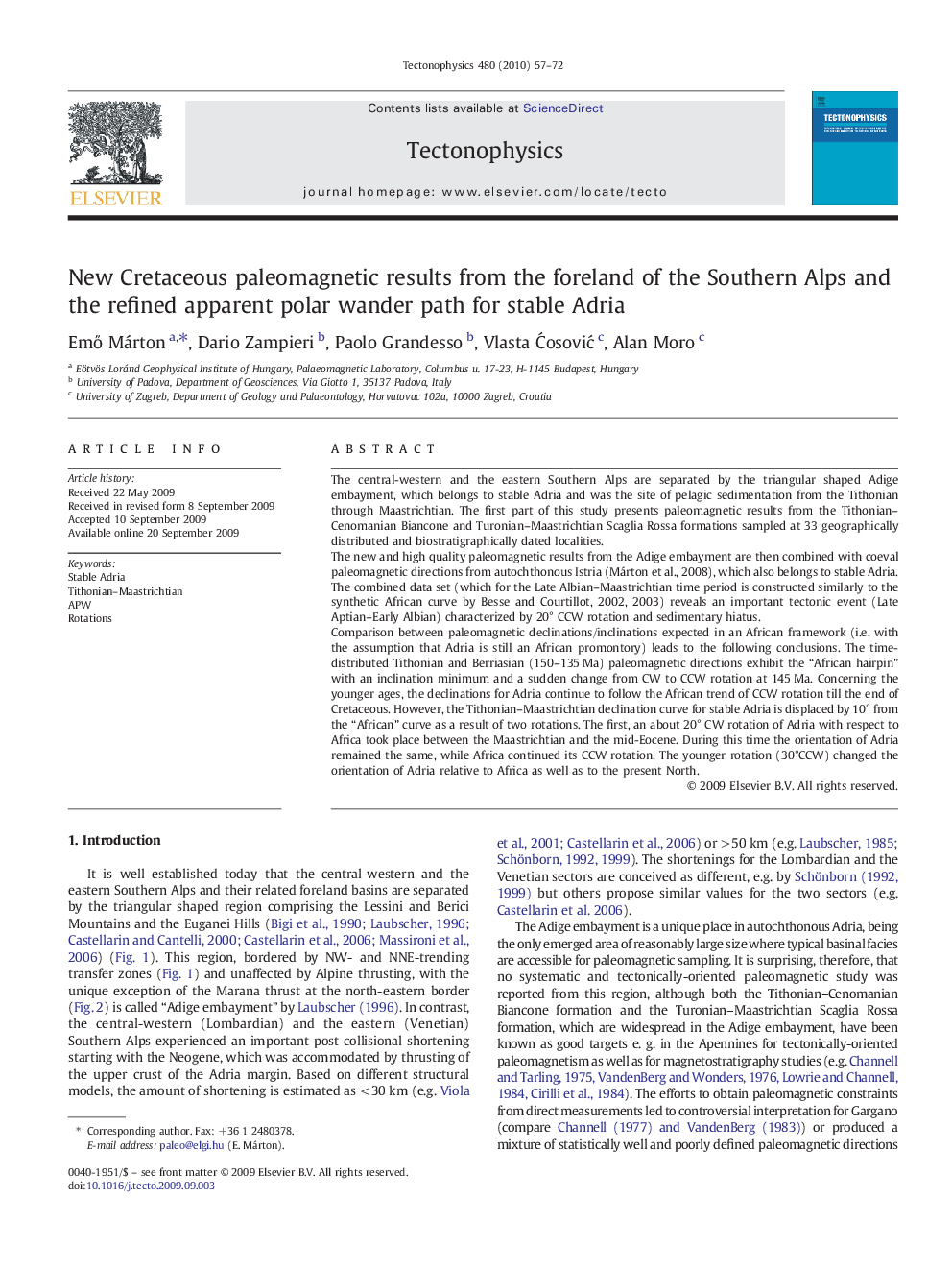| کد مقاله | کد نشریه | سال انتشار | مقاله انگلیسی | نسخه تمام متن |
|---|---|---|---|---|
| 4693670 | 1636876 | 2010 | 16 صفحه PDF | دانلود رایگان |

The central-western and the eastern Southern Alps are separated by the triangular shaped Adige embayment, which belongs to stable Adria and was the site of pelagic sedimentation from the Tithonian through Maastrichtian. The first part of this study presents paleomagnetic results from the Tithonian–Cenomanian Biancone and Turonian–Maastrichtian Scaglia Rossa formations sampled at 33 geographically distributed and biostratigraphically dated localities.The new and high quality paleomagnetic results from the Adige embayment are then combined with coeval paleomagnetic directions from autochthonous Istria (Márton et al., 2008), which also belongs to stable Adria. The combined data set (which for the Late Albian–Maastrichtian time period is constructed similarly to the synthetic African curve by Besse and Courtillot, 2002, 2003) reveals an important tectonic event (Late Aptian–Early Albian) characterized by 20° CCW rotation and sedimentary hiatus.Comparison between paleomagnetic declinations/inclinations expected in an African framework (i.e. with the assumption that Adria is still an African promontory) leads to the following conclusions. The time-distributed Tithonian and Berriasian (150–135 Ma) paleomagnetic directions exhibit the “African hairpin” with an inclination minimum and a sudden change from CW to CCW rotation at 145 Ma. Concerning the younger ages, the declinations for Adria continue to follow the African trend of CCW rotation till the end of Cretaceous. However, the Tithonian–Maastrichtian declination curve for stable Adria is displaced by 10° from the “African” curve as a result of two rotations. The first, an about 20° CW rotation of Adria with respect to Africa took place between the Maastrichtian and the mid-Eocene. During this time the orientation of Adria remained the same, while Africa continued its CCW rotation. The younger rotation (30°CCW) changed the orientation of Adria relative to Africa as well as to the present North.
Journal: Tectonophysics - Volume 480, Issues 1–4, 5 January 2010, Pages 57–72